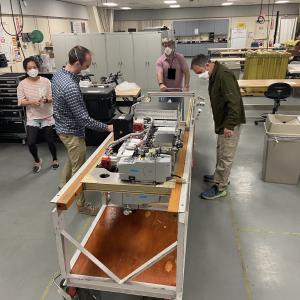Particle Analysis By Laser Mass Spectrometry- Next Generation (PALMS-NG)
The Purdue PALMS-NG instrument measures single-particle aerosol composition using UV laser ablation to generate ions that are analyzed with a time-of-flight mass spectrometer. The PALMS size range is approximately 150 to >3000 nm and encompasses most of the accumulation and coarse mode aerosol volume. Individual aerosol particles are classified into compositional classes. The size-dependent composition data is combined with aerosol counting instruments from Aerosol Microphysical Properties (AMP), the Langley Aerosol Research Group Experiment (LARGE), and other groups to generate quantitative, composition-resolved aerosol concentrations. Background tropospheric concentrations of climate-relevant aerosol including mineral dust, sea salt, and biomass burning particles are the primary foci for the ATom campaigns. PALMS also provides a variety of compositional tracers to identify aerosol sources, probe mixing state, track particle aging, and investigate convective transport and cloud processing.
*_Standard data products_**: *
Particle type number fractions: sulfate/organic/nitrate mixtures, biomass burning, EC, sea salt, mineral dust, meteoric, alkali salts, heavy fuel combustion, and other. Sampling times range from 1-5 mins.
*_Advanced data products_**:*
Number, surface area, volume, and mass concentrations of the above particle types. Total sulfate and organic mass concentrations. Relative and absolute abundance of various chemical markers and aerosol sub-components: methanesulfonic acid, sulfate acidity, organic oxidation level, iodine, bromine, organosulfates, pyridine, and other species.

